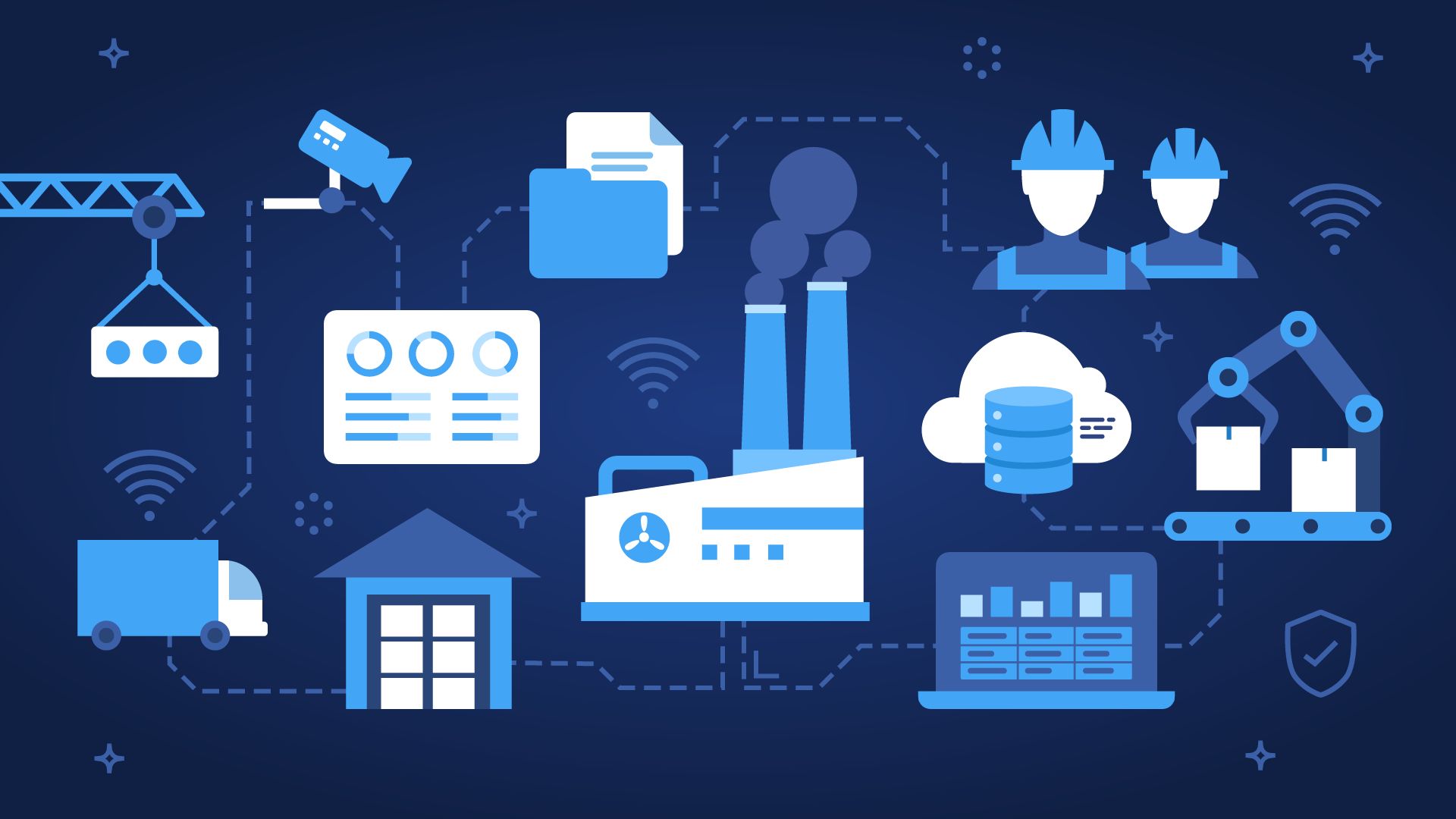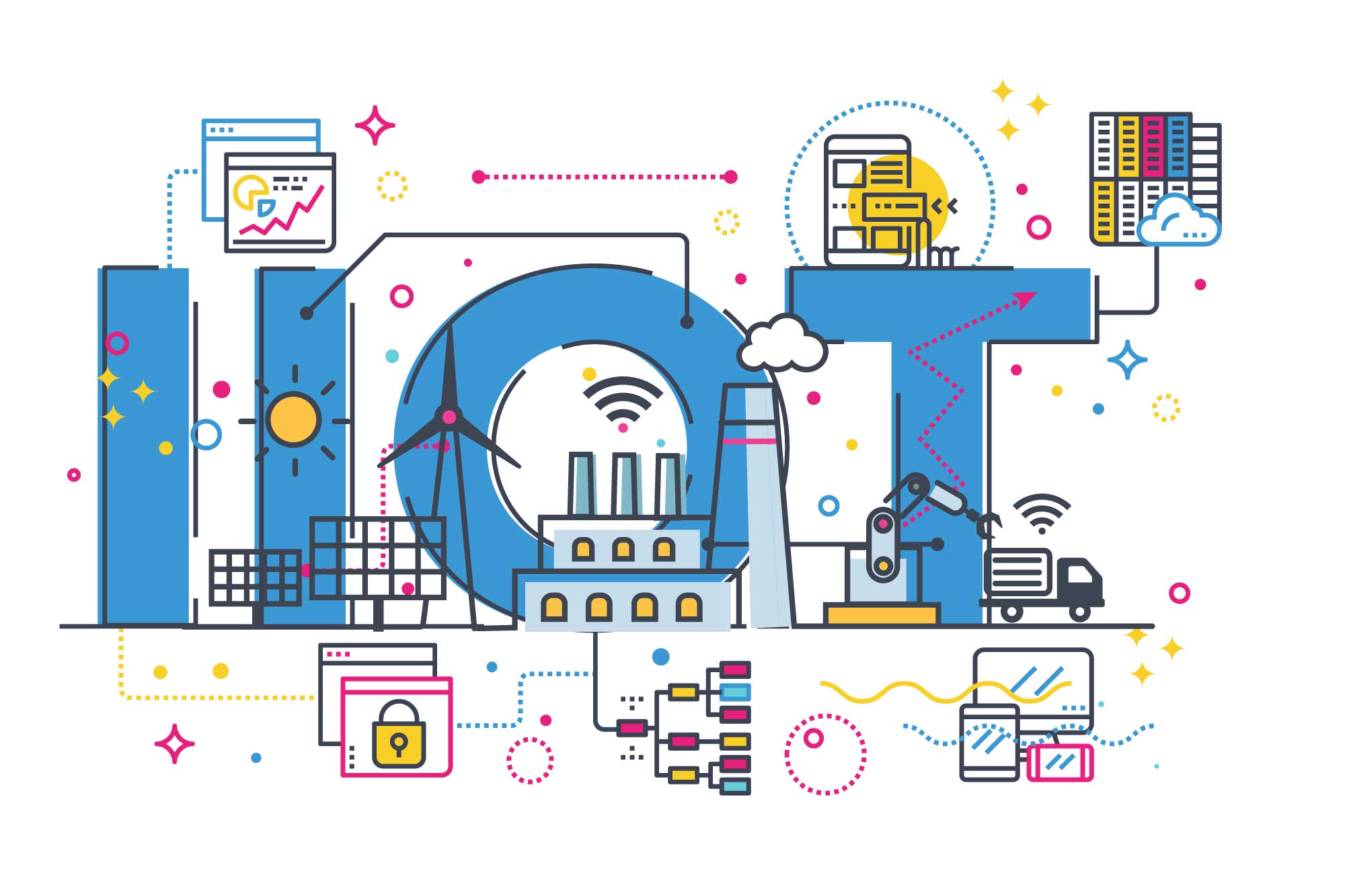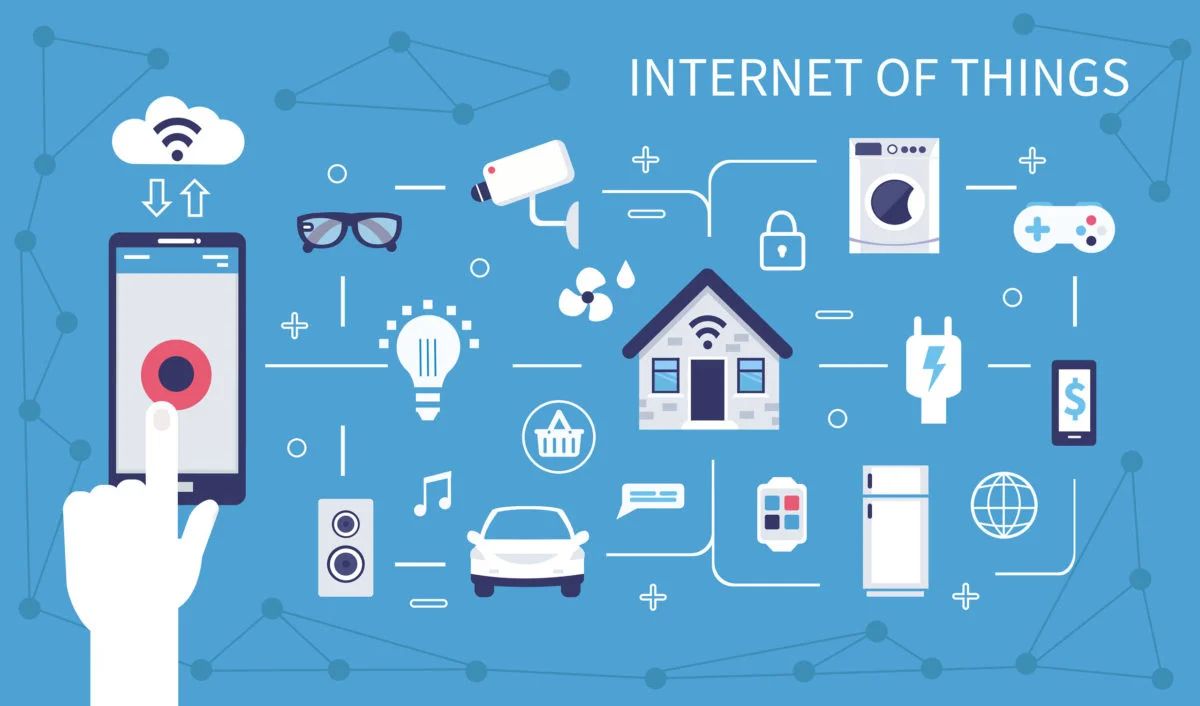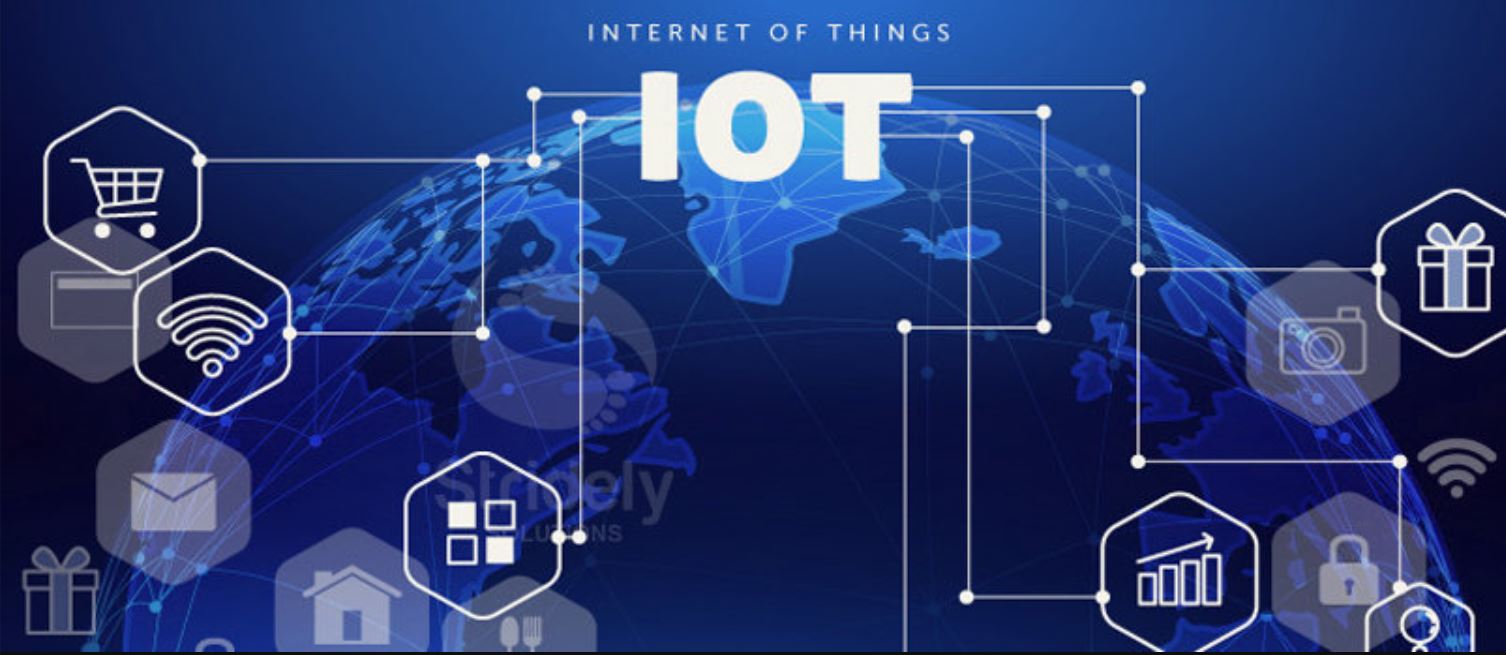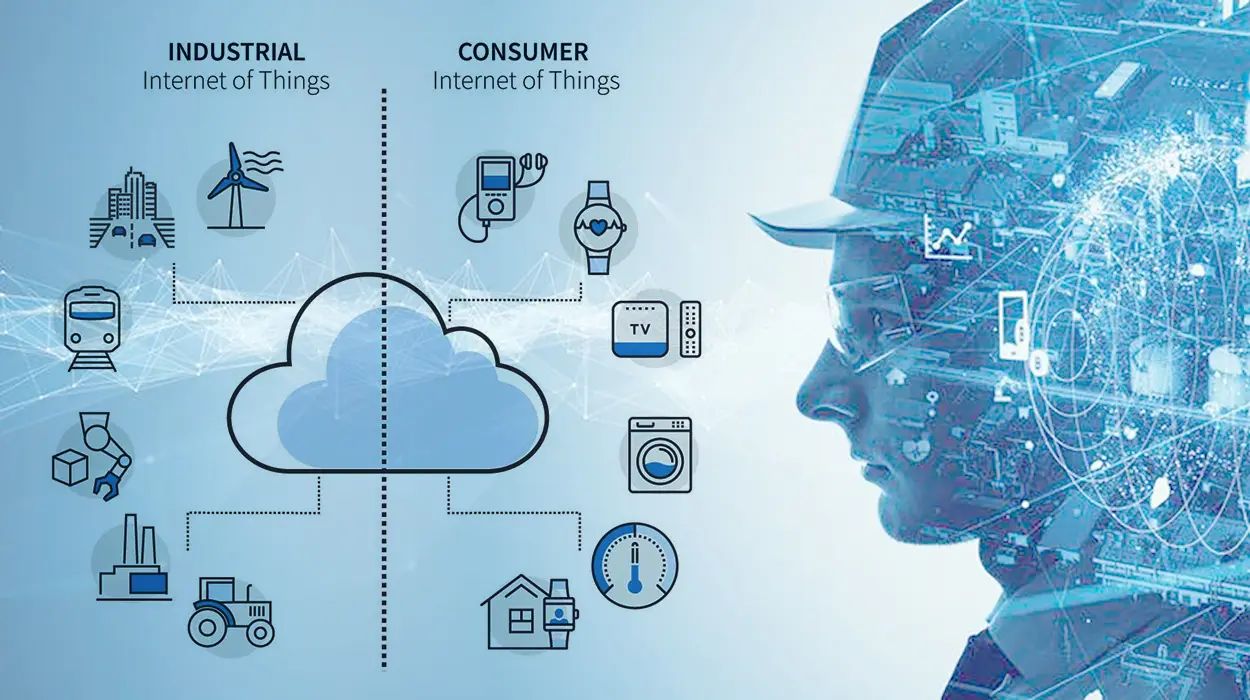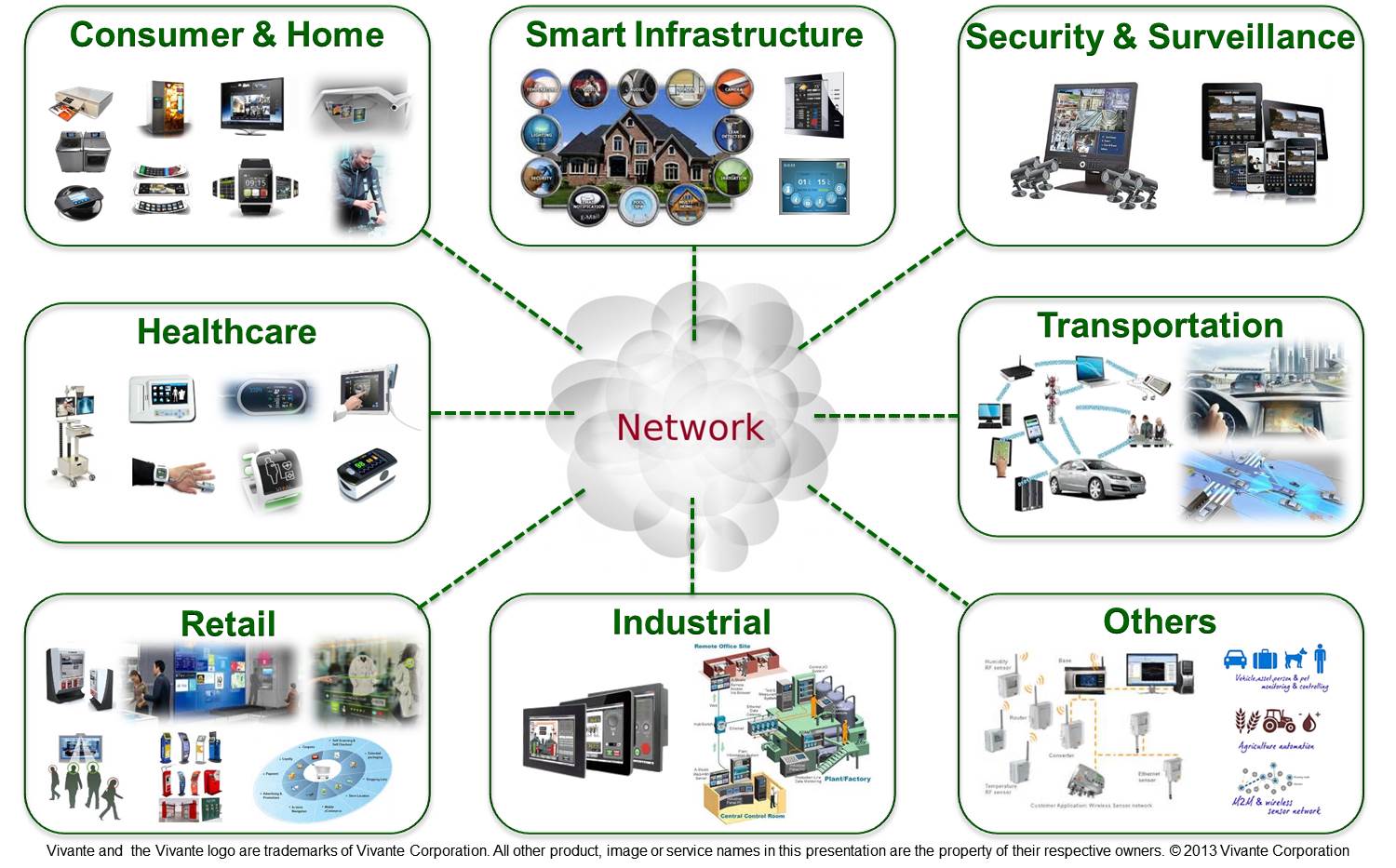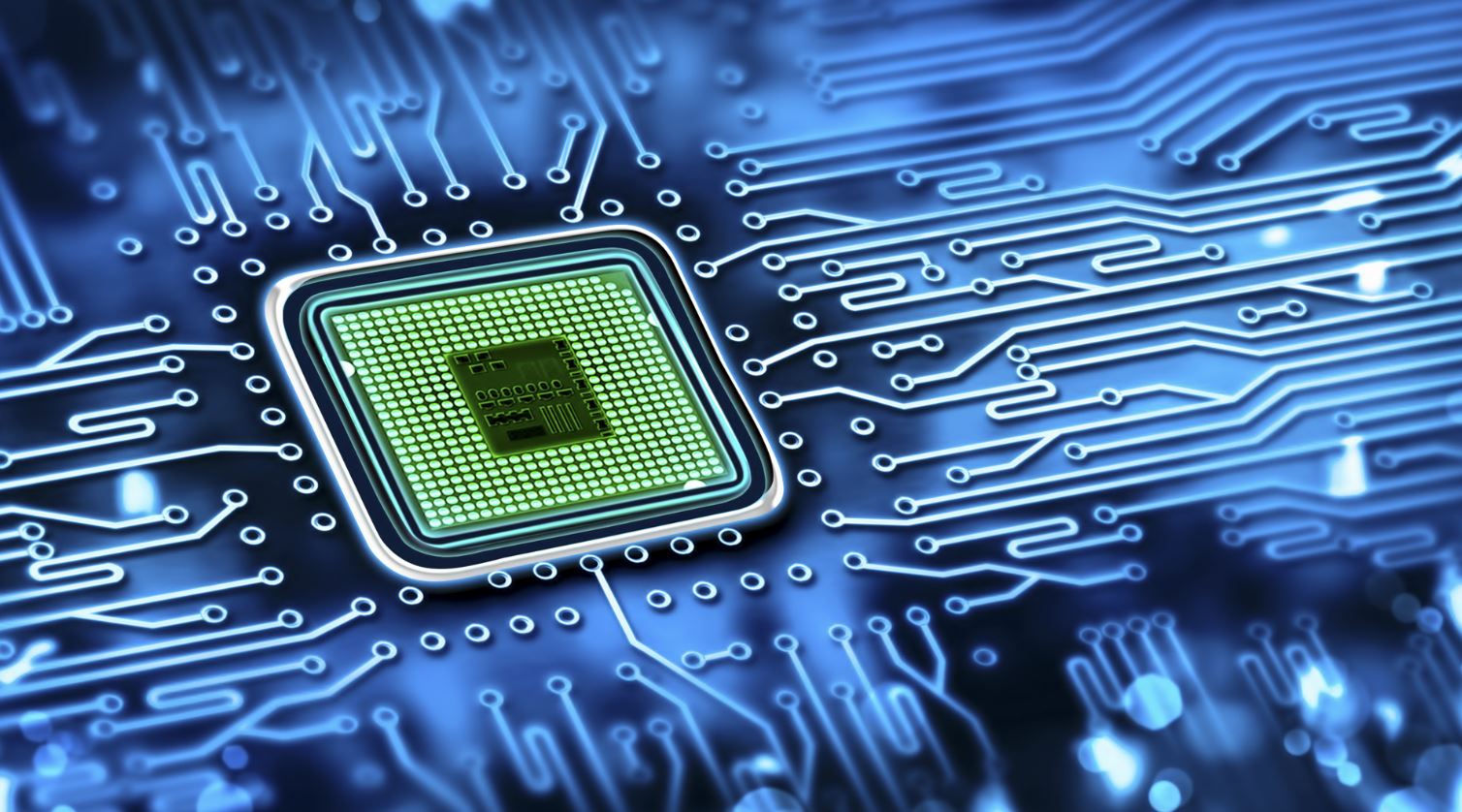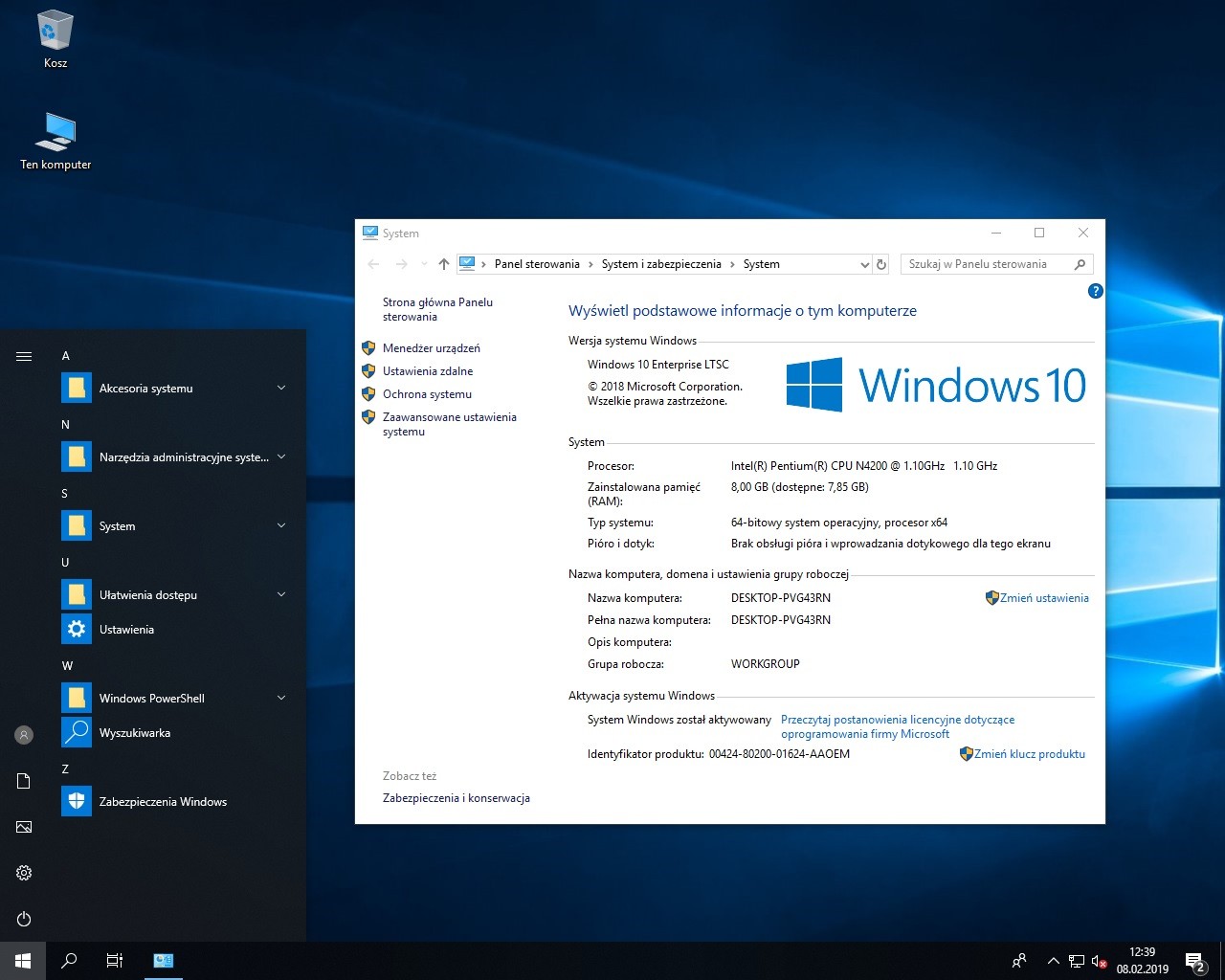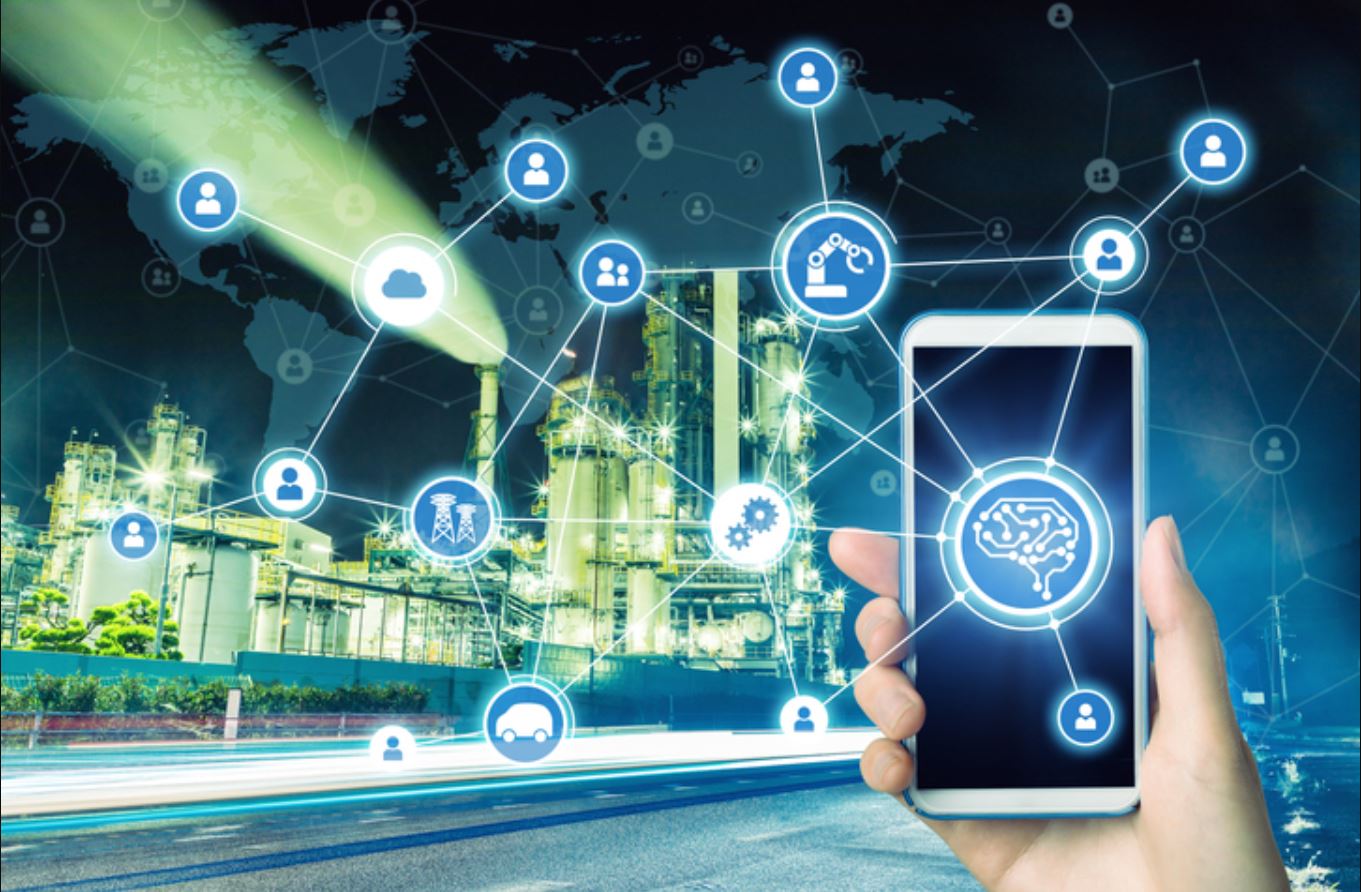Introduction
As technology evolves, our world becomes more interconnected than ever before. The Internet of Things, commonly known as IoT, is one such technological advancement that is transforming various industries and aspects of our daily lives. IoT refers to the network of physical devices, vehicles, appliances, and other objects embedded with sensors, software, and connectivity, enabling them to collect and exchange data.
The concept of IoT has gained significant traction in recent times, promising to revolutionize the way we live, work, and interact with our surroundings. With the increasing availability of internet connectivity, IoT has the potential to impact numerous sectors, including healthcare, transportation, manufacturing, and agriculture.
IoT technology allows devices to communicate and share data with each other, creating a seamless network of information. This interconnectedness enables businesses and individuals to make smarter decisions, automate processes, and improve efficiency. From smart homes that can be controlled remotely to wearable fitness trackers that monitor our health, IoT devices are becoming more prevalent in our everyday lives.
In this article, we will delve into the various aspects of the IoT industry, its history, applications, and the challenges it faces. Furthermore, we will explore the future prospects of IoT and how this technology is poised to shape our world in the years to come.
Definition of IoT
The Internet of Things, often abbreviated as IoT, is a paradigm that encompasses a vast network of interconnected physical objects or “things.” These objects, which can include devices, sensors, software, and even everyday items like household appliances, are embedded with technology that allows them to collect and exchange data with each other via the internet.
At its core, IoT is about enabling devices to communicate and share information intelligently, without the need for direct human intervention. These devices are equipped with sensors and software that enable them to gather data, analyze it, and take appropriate actions based on the information received.
The defining characteristic of IoT is the seamless connectivity it provides. By leveraging internet connectivity and wireless communication technologies such as Wi-Fi, Bluetooth, and cellular networks, IoT devices can communicate with each other and with humans, creating a comprehensive ecosystem of interconnected objects.
The data collected by IoT devices can range from simple environmental information such as temperature and humidity to complex data related to an individual’s health status or a machine’s performance. This data is then analyzed and used to drive decision-making processes, improve operational efficiency, and enhance user experiences.
Ultimately, the goal of IoT is to make devices smarter, more efficient, and capable of autonomous decision-making. This interconnected web of devices has the potential to revolutionize industries and transform the way we live, work, and interact with our environment.
History of IoT
The concept of IoT has been around for several decades, with the roots of this technology stretching back to the early 1980s. However, it wasn’t until the 2000s that advancements in networking and technology truly paved the way for the exponential growth of the IoT industry.
The term “Internet of Things” was coined by Kevin Ashton in 1999, a British entrepreneur and technology pioneer. Ashton used this term to describe the concept of connecting physical objects to the internet and enabling them to communicate with each other.
Early developments in IoT primarily revolved around machine-to-machine (M2M) communication, where devices were interconnected to exchange information and perform specific tasks. However, the true potential of IoT became apparent with the increasing availability of broadband internet, the proliferation of smartphones, and the advancement of miniaturized sensors.
One milestone in the history of IoT is the development of the RFID (Radio Frequency Identification) technology. RFID tags, combined with wireless connectivity, provided a means to track and identify objects remotely. This breakthrough laid the foundation for supply chain optimization and inventory management systems.
Another significant development occurred in 2008 when the number of devices connected to the internet surpassed the global population. This milestone marked the exponential growth of IoT devices, spurring innovation and technological advancements in the field.
In recent years, IoT has witnessed rapid expansion and adoption, driven by advancements in cloud computing, artificial intelligence, and data analytics. These technological advancements have enabled the processing and analysis of massive amounts of data collected by IoT devices, unlocking new insights and opportunities.
Today, IoT technology is prevalent in various industries and domains, from smart homes and wearable devices to industrial automation and smart cities. The history of IoT showcases the continuous evolution of this technology and its transformative impact on society and the way we interact with our environment.
Importance of IoT
The Internet of Things (IoT) has become increasingly important due to its potential to revolutionize multiple industries and significantly improve our quality of life. The interconnectedness and data exchange facilitated by IoT devices bring forth numerous benefits and opportunities.
One key advantage of IoT is the ability to enhance efficiency and productivity across various sectors. By collecting and analyzing real-time data, IoT devices can optimize processes, automate tasks, and improve decision-making. In manufacturing, for example, IoT enables predictive maintenance, helping to prevent equipment breakdowns and reduce downtime.
IoT also plays a crucial role in enabling smart cities. By embedding sensors in infrastructure and public services, cities can monitor air quality, control traffic flow, and efficiently manage resources such as water and energy. This not only enhances sustainability but also improves the overall quality of life for residents.
In healthcare, IoT has the potential to revolutionize patient care. Wearable devices can monitor vital signs and provide real-time health data to healthcare professionals, enabling early detection and intervention. IoT-powered telemedicine allows for remote patient monitoring and facilitates access to healthcare services in remote areas.
IoT is transforming the way we live in our homes as well. Smart home devices, such as thermostats, lighting systems, and security cameras, can be controlled remotely, leading to increased convenience, energy efficiency, and enhanced home security.
The importance of IoT is further highlighted in the field of agriculture. IoT technology allows farmers to monitor soil conditions, weather patterns, and crop health remotely. With this information, farmers can optimize irrigation, manage pests, and increase crop yields while reducing waste and environmental impact.
Furthermore, IoT has the potential to revolutionize transportation and logistics. Connected vehicles can communicate with each other and with traffic infrastructure, leading to improved traffic management, reduced congestion, and enhanced safety measures. IoT-powered fleet management systems enable more efficient logistics operations, reducing costs and improving delivery times.
Overall, the importance of IoT lies in its ability to transform industries, improve efficiency, and enhance our daily lives. With the advancements in technology and the increasing number of connected devices, the potential for IoT to revolutionize various sectors is boundless.
Applications of IoT
The Internet of Things (IoT) has a wide range of applications across various industries, revolutionizing the way we interact with technology and enabling innovative solutions to real-world challenges.
One key application of IoT is in the field of healthcare. IoT devices, such as wearable fitness trackers and smart medical devices, allow for remote patient monitoring, real-time health data collection, and early detection of health issues. These devices help healthcare professionals deliver personalized care, improve patient outcomes, and reduce healthcare costs.
In the realm of transportation, IoT is transforming the concept of connected vehicles. IoT-enabled sensors and systems in cars provide real-time data on traffic conditions, navigation, and vehicle diagnostics. This connectivity enables smart traffic management, assists in accident prevention, and leads to more efficient transportation systems.
IoT is also making homes smarter with the advent of smart home devices. From thermostats and lighting systems to security cameras and virtual assistants, IoT technology allows homeowners to control and automate various aspects of their homes. This enhances convenience, energy efficiency, and home security.
The industrial sector benefits greatly from IoT applications as well. Industrial IoT (IIoT) supports the concept of connected factories, where machinery and equipment are interconnected to improve productivity, minimize downtime, and enhance operational efficiency. Predictive maintenance, asset tracking, and remote monitoring are key applications in this domain.
IoT has a significant impact on agriculture, enabling farmers to improve efficiency and sustainability. IoT sensors collect data on soil quality, weather patterns, and crop health, allowing farmers to make informed decisions regarding irrigation, fertilization, and pest control. This results in higher crop yields, reduced resource waste, and lower environmental impact.
Smart cities leverage IoT to enhance urban living. IoT-enabled sensors and networks monitor and control various aspects of urban infrastructure, such as traffic flow, energy usage, waste management, and public safety. This improves the overall livability, sustainability, and resource efficiency of cities.
In the retail sector, IoT applications include inventory management, supply chain optimization, and personalized shopping experiences. Smart shelves and RFID technology facilitate real-time inventory tracking, ensuring stock availability and reducing revenue loss due to out-of-stock items. IoT devices also enable personalized marketing and customer engagement strategies.
These are just a few examples of the myriad applications of IoT. The potential for IoT to transform industries and everyday life is vast, as innovative solutions continue to be developed, leveraging the power of interconnected devices and intelligent data analysis.
Challenges in the IoT Industry
While the Internet of Things (IoT) presents tremendous opportunities, it also entails several challenges that need to be addressed for widespread adoption and success.
One of the significant challenges is ensuring the security and privacy of IoT devices and the data they collect. With the increasing number of connected devices, the potential for security breaches and data privacy infringements becomes a critical concern. IoT devices often collect sensitive personal and financial information, making them attractive targets for hackers. Implementing robust security measures, such as encryption and authentication protocols, is crucial to safeguarding user data and maintaining user trust.
Interoperability is another challenge in the IoT industry. As the number of IoT devices from different manufacturers grows, achieving seamless interoperability and compatibility becomes complex. Lack of standardized protocols and communication standards can limit the interoperability between devices, hindering the potential for a unified IoT ecosystem. Establishing common standards and protocols is essential for seamless integration and interoperability among devices from different vendors.
Scalability is a challenge faced by IoT solution providers. As the number of connected devices increases exponentially, managing and scaling IoT platforms and infrastructure becomes increasingly complex. Solutions need to be able to handle massive amounts of data and accommodate the growing number of devices without impacting performance or reliability.
The exponential growth of data generated by IoT devices poses another challenge. The sheer volume of data collected from sensors and devices can overwhelm networks and storage systems. IoT systems must be capable of efficiently processing, analyzing, and storing large amounts of data in real-time to derive meaningful insights and facilitate timely decision-making.
Power management is a significant concern for IoT devices, especially those that are battery-powered or located in remote areas. Extending the battery life of devices and implementing energy-efficient protocols is crucial to ensure the continuous operation and longevity of IoT solutions.
Furthermore, the ethical and legal implications of IoT present challenges that need to be addressed. Issues such as data ownership, consent, and responsible use of data need to be considered to protect individual privacy rights and prevent misuse of personal information.
Lastly, the cost associated with IoT deployment can be a barrier, particularly for small businesses or individuals. The hardware, connectivity, and infrastructure required for IoT implementation can be expensive, limiting access to the technology for certain segments of the population. Efforts to reduce costs and increase affordability will play a crucial role in driving widespread adoption of IoT solutions.
Addressing these challenges will require collaboration between industry stakeholders, policymakers, and technology experts. By proactively addressing security concerns, establishing standards, ensuring scalability and interoperability, and addressing ethical and legal considerations, the IoT industry can overcome these challenges and unlock the full potential of this transformative technology.
Future of IoT
The future of the Internet of Things (IoT) holds immense potential for further advancements and transformation across industries. As technology continues to evolve, IoT is expected to play a crucial role in shaping our digital landscape and revolutionizing the way we live, work, and interact with our environment.
One key aspect of the future of IoT is the proliferation of connected devices. The number of IoT devices is projected to grow exponentially in the coming years, with estimates predicting billions of devices being connected by 2030. This increase in the number of devices will lead to an unprecedented volume of data being generated, enabling more comprehensive insights and driving intelligent decision-making processes.
As IoT matures, we can expect advancements in artificial intelligence (AI) and machine learning (ML) to complement IoT systems. AI and ML technologies can analyze massive amounts of IoT-generated data and extract valuable insights in real-time. This fusion of IoT and AI will result in smart and autonomous systems that can proactively respond to changing conditions and deliver personalized experiences.
5G technology will also reshape the future of IoT. The deployment of 5G networks will provide faster and more reliable connectivity, enabling greater efficiency in data transmission and enhancing the capabilities of IoT devices. This will pave the way for more sophisticated IoT applications, such as autonomous vehicles, smart cities, and advanced industrial automation.
Edge computing is another emerging trend that will shape the future of IoT. Edge computing involves processing and analyzing data at the edge of the network, closer to the source of data generation. This approach reduces latency, conserves bandwidth, and enhances real-time decision-making capabilities. By leveraging edge computing, IoT devices can perform critical processing tasks locally, improving response times and enabling more efficient and autonomous operations.
The future of IoT will also see increased focus on sustainability and energy efficiency. IoT devices and systems will play a crucial role in monitoring and optimizing energy usage, enabling more efficient management of resources and reducing environmental impact. From smart grids and energy management systems to sustainable agriculture practices, IoT will empower industries and individuals to adopt greener and more sustainable practices.
Furthermore, the integration of IoT with other emerging technologies, such as blockchain, virtual reality, and augmented reality, will open up new possibilities. Blockchain can enhance the security and trustworthiness of data exchanged between IoT devices, while virtual reality and augmented reality can create immersive and interactive experiences that enhance user engagement and productivity.
Overall, the future of IoT is promising and exciting. As technology continues to evolve, IoT will become more sophisticated, scalable, and interconnected. With advancements in connectivity, data analytics, AI, and emerging technologies, IoT will continue to revolutionize industries, drive innovation, and improve our everyday lives.
Conclusion
The Internet of Things (IoT) has emerged as a transformative force, connecting devices, objects, and people like never before. Its impact spans across various industries, offering countless opportunities for innovation, efficiency, and improved quality of life.
Throughout this article, we explored the definition and history of IoT, recognizing its potential to revolutionize industries such as healthcare, transportation, manufacturing, and agriculture. We also recognized the challenges that come with IoT implementation, such as security concerns, interoperability, scalability, data management, power consumption, and ethical considerations. The future of IoT looks promising, with advancements in connectivity, artificial intelligence, 5G, edge computing, and the integration of IoT with emerging technologies.
As the IoT industry continues to evolve, it is crucial for stakeholders to address the challenges and work together to develop standardized protocols, robust security measures, scalable infrastructure, and cost-effective solutions. Additionally, ethical and legal frameworks must be considered to protect user privacy and ensure responsible data usage.
In conclusion, the Internet of Things represents a monumental shift in the way we interact with technology and the world around us. As connectivity and smart devices become increasingly prevalent, the potential for IoT to enhance our lives, drive innovation, and address societal challenges is tremendous. By embracing the opportunities and addressing the challenges, we can unlock the full potential of IoT and shape a future where connectivity and intelligent data-driven decisions improve efficiency, sustainability, and the well-being of individuals and communities.







